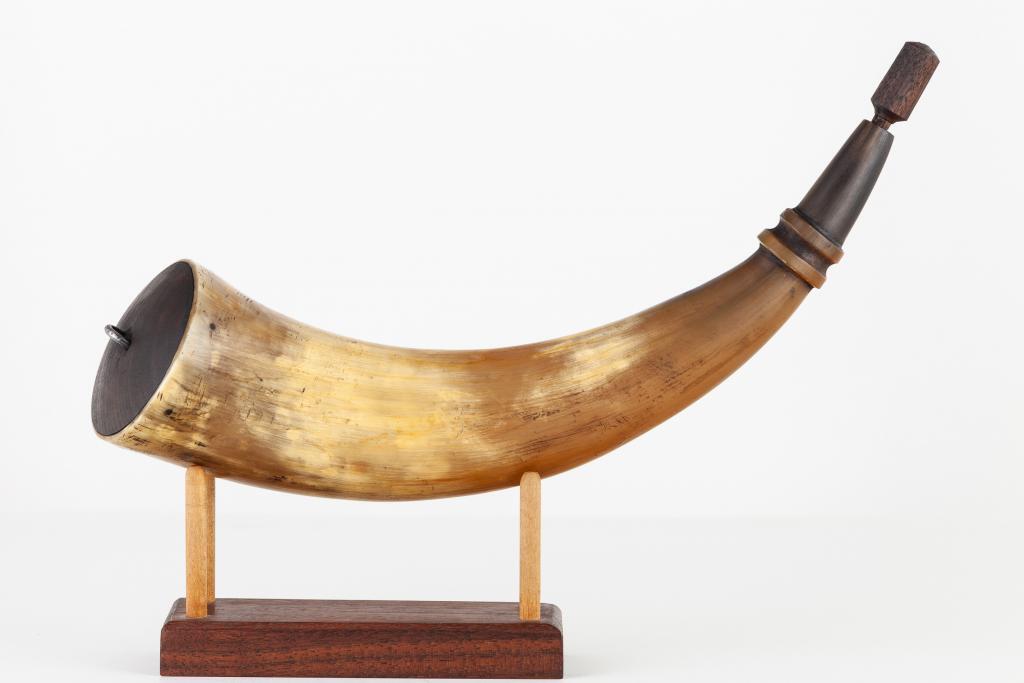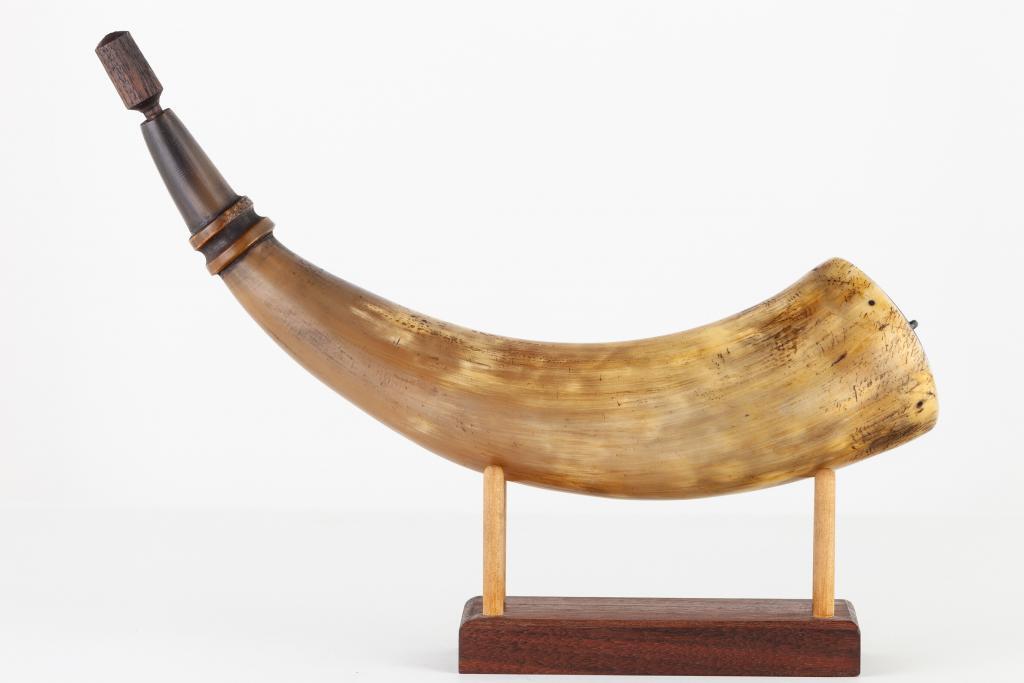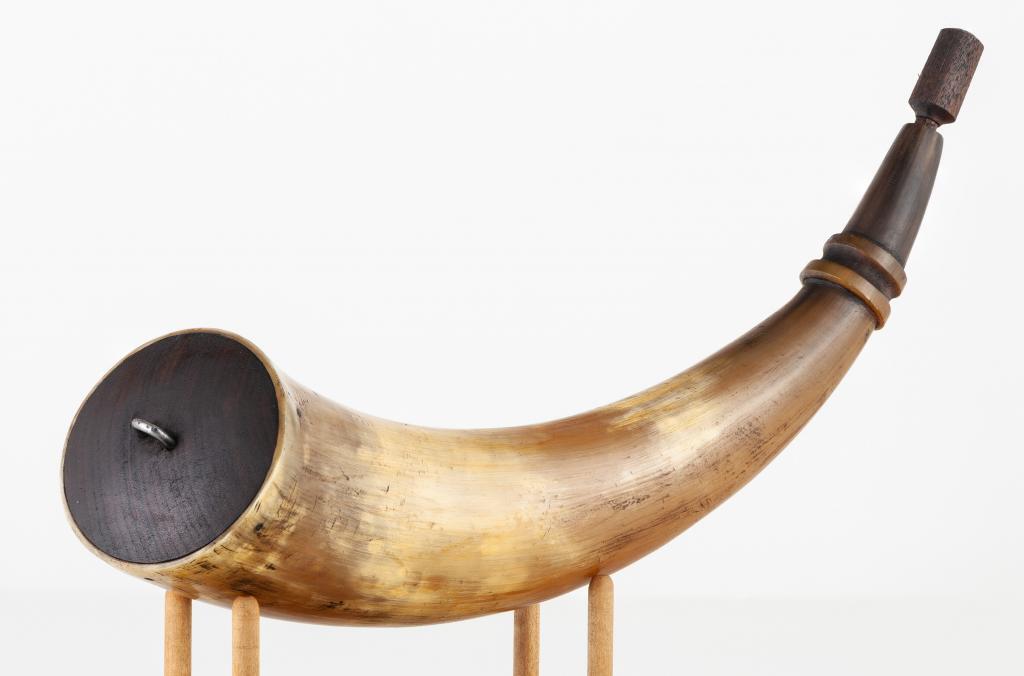Shown here is my interpretation of a plain early 18th century horn. It was made to go with my Mid 18th Century shot pouch. This horn is based on the Gersham Biglow horn on page 13 of Powder Horns, Documents of History by Tom Grinslade. That horn is dated to 1746.
This horn is 14 1/2″ around the outside curve not including the staple or stopper. It is a little less that 3″ in diameter at the base. There is a slightly domed walnut base plug that has been hollowed out about half it’s length. The stopper is also walnut.
This is a traditional right hand horn intended to be carried on the right side. That means that the horn is from the right side of the cow with the base pointing out and the spout pointing in when carried on the right side.
Right or Left Hand Carry?
What is right or left hand carry? Simply, it is the side of the body on which a horn is intended to be worn. Historically, a curve of the tip to the left as viewed from the top is a right hand carry horn and also from the right side of the cow. A curve of the tip to the right would historically be a left hand carry horn and from the left side of the cow. If there is no significant curve of the horn as viewed from the top, then the horn can be easily worn on either side with no conflict. Most horns have so little curve it really doesn’t matter much and the modern pattern of carry is frequently opposite of the historical pattern.
Carrying a horn on the same side of the body as it came from the cow results in the tip pointing toward the body and the base pointing away from the body. I also like the base of the horn to point to ward the body, as do many modern wearers, so I usually use the opposite side horn and rotate it about 90 degrees so that both the tip and the base of the horn point into the body. This makes a horn from the left side of the cow into a powder horn you can carry on the right side of the body. This is my personal preference, but not generally historically correct. Historically, powder horns were usually carried on the same side of the body as they came from on the cow. If you want to be completely historically correct, you need to understand that.
Sometimes a horn that is technically a left hand horn might wrap around the body better on the right hand side and vice versa. So, in describing a horn, I will tell you whether a horn is historically a left hand or a right hand. Then I will tell you on which side the horn was built to be carried, if it is different. I will also try to include a photo from the top of the horn so you can see the curve for yourself. On which side you actually carry a horn, that is up to you.



